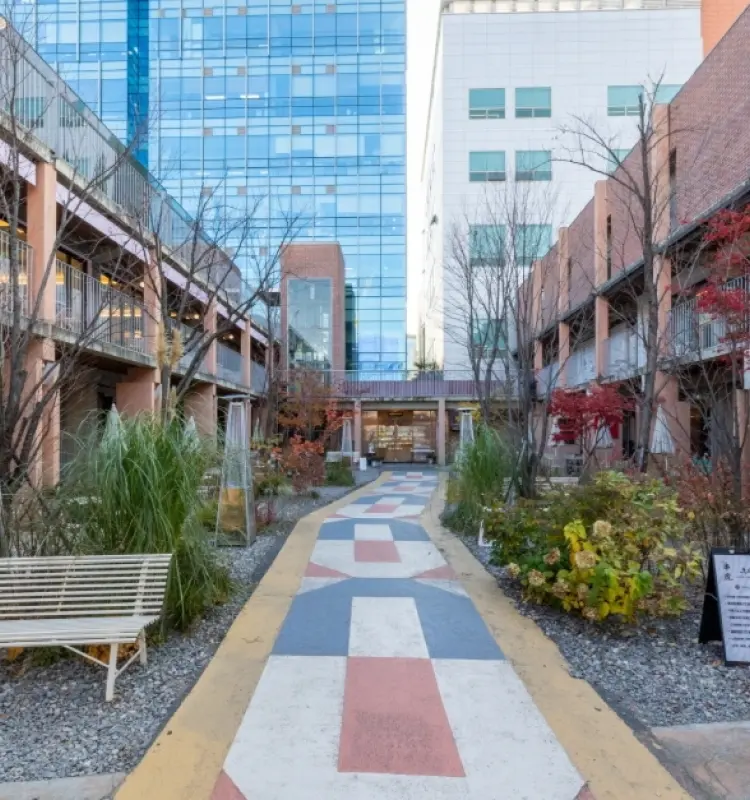Located at the confluence of the Han River and Jungnangcheon in Seongdong District, Seongsu-dong is often referred to as ‘Ttukseom’ by locals. It encompasses Seongsu-dong 1-ga and 2-ga and is situated in a peninsula-like area. If you follow Jungnangcheon upstream, the junction of Cheonggyecheon and Jungnangcheon can be found in Seongsu 1-ga 1-dong.

Characteristics of Seongsu-dong
Seongsu-dong plays a pivotal role in connecting the living areas of Wangsimni, Hanyang University, and Konkuk University, acting as a middle ground. After the construction of Seongsu Bridge, it became a crucial link between Wangsimni and Gangnam. Historically, Seongsu-dong was more closely tied to Gwangjin-gu rather than Seongdong-gu, largely due to the presence of industrial areas up until the early 2010s. However, the area started to evolve, with the development of the Seoul Forest area becoming a major catalyst for Seongsu-dong’s transformation into a thriving independent district.

From Industrial Area to Hub of Culture and Innovation
Once known for its factories, particularly shoe manufacturing, Seongsu-dong has undergone significant redevelopment in recent years. The old industrial buildings have been converted into ‘workshop-type factories’ and ‘knowledge industry centers’—spaces where IT startups and venture businesses have flourished. This shift from industrial to creative and business hubs has made Seongsu-dong a cultural center for the younger generation, particularly with its vibrant café scene and the rise of trendy businesses. Notable locations like Dior Seongsu and Blue Bottle have opened flagship stores, adding to the area’s allure.
The district has also become home to a range of start-up offices and artists’ spaces, resulting in Seongsu-dong becoming one of the hottest spots for the MZ generation. Its “hip” vibe and mix of old and new have created a unique cultural landscape that draws people from across the city.

Seongsu-dong’s Gentrification and Growth
Seongsu-dong has become one of the most rapidly appreciating real estate areas in Seoul. The development of high-end residential complexes like Galleria Fore, Seoul Forest Trimage, and Acro Seoul Forest has contributed significantly to its rising status as a wealthier district. These luxury apartments, often occupied by celebrities and the new wealthy, are seen as major symbols of Seongsu-dong’s gentrification and economic growth.
This has led many, including BTS’s Suga, to draw parallels between the two districts.
Despite its upscale residential developments, it still contains areas of industrial land, with a mix of ultra-modern luxury apartments and factory districts, which creates a distinctive and unique urban atmosphere. Currently, the area around the Han River is undergoing large-scale redevelopment into high-rise apartments and public parks through the Seongsu Strategic Maintenance Zone project, which is set to further transform the district.

Seongsu-dong: The Brooklyn of Korea?
Seongsu-dong has earned the nickname ‘The Brooklyn of Korea’ from some internet users. This comparison stems from its transformation from a neglected industrial district, similar to Brooklyn in New York, to a vibrant cultural and creative hub. Just like Brooklyn experienced a revival in the 1990s through the influx of young artists and the hip-hop movement, it has undergone a similar renaissance since the 2010s.
Both neighborhoods share a history of industrial decline, but they have been revitalized by a new generation seeking creative spaces. Seongsu-dong’s mix of retro architecture, old brick buildings, and industrial remnants, along with the presence of large rivers that separate them from the rest of the city, gives it an atmosphere similar to that of Brooklyn.

In summary, Seongsu-dong represents a fusion of the old and new, where industrial heritage meets a modern, creative future. With its growing influence in culture, business, and lifestyle, it is quickly becoming one of Seoul’s most iconic and exciting neighborhoods.
